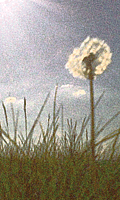


NEWS:
22 hours this month including two sessions and a special tribute to CAN
Artist Info
|
Karel Goeyvaerts  Image from Discogs  Karel Goeyvaerts (8 June 1923–February 3, 1993) was a Belgian composer born in Antwerp. After studies at the Royal Flemish Music Conservatory in Antwerp, he studied composition in Paris with Darius Milhaud and analysis with Olivier Messiaen. He also studied ondes martenot with Maurice Martenot, who invented the instrument. Karel Goeyvaerts (8 June 1923–February 3, 1993) was a Belgian composer born in Antwerp. After studies at the Royal Flemish Music Conservatory in Antwerp, he studied composition in Paris with Darius Milhaud and analysis with Olivier Messiaen. He also studied ondes martenot with Maurice Martenot, who invented the instrument.In 1951, Goeyvaerts attended the famous Darmstadt New Music Summer School where he met Karlheinz Stockhausen who was five years younger. Both were devout Catholics and found ways of integrating religious numerology into their serial compositions. They found themselves deep in conversation, and performed a movement from Goeyvaerts's "Nummer 1", Sonata for 2 pianos in the composition course by Theodor W. Adorno there. They were both astonished upon hearing for the first time Messiaen's "Mode de valeurs et d'intensités" (from Quatre Études de rhythme), in a recording by the composer which Antoine Goléa played at a lecture. These experiences together convinced Stockhausen he should study with Messiaen. Goeyvaerts became very excited in 1952 when he learned that Stockhausen had access in Paris to a generator of sine waves. Goeyvaerts saw them as an important discovery for music: the purest sound possible. At the time, Stockhausen did not share his enthusiasm, owing partly to the inability with the equipment at hand to superimpose sine tones. Only later, after taking up his new post at the NWDR Electronic Music Studio in Cologne, did Stockhausen find more suitable equipment, in July 1953 (Toop 1979). One of the first works produced there was Goeyvaerts's Nr. 5 with Pure Tones, which Stockhausen helped his friend to realize. (When Stockhausen seemingly abandoned his work with sine waves and returned to writing compositions for solo piano, Goeyvaerts felt that Stockhausen was abandoning an important discovery and took up the matter from a philosophical point of view himself.) There has been some controversy about who wrote the first European "total" serial composition. His Nummer 2 (1951) for 13 instruments is one of the contenders (Delaere 1994, 13), as is his Nummer 1 (1950) Sonata for Two Pianos, and the Sonata for Two Pianos by Michel Fano (1950), depending on definitions of "total serialism" (Toop 1974). After withdrawing from the musical world for a while, he accepted a position in 1970 at the Institute for Psychoacoustic and Electronic Music (IPEM) in Ghent, which led to several other prestigious appointments in Belgium. His works from after 1960 take on aspects of minimalism, the best-known examples being his series of five Litanies (1979–82) and his final work, the opera Aquarius (1983–93). Though minimalism is ordinarily thought of as a reaction against serialism, analyses of his early serial compositions (especially the electronic Nr. 4, met dode tonen [with dead tones] and Nr. 5, met zuivere tonen [with pure tones]) reveal how close the connections actually are (Sabbe 1977). Goeyvaerts died suddenly in 1993. Read more on Last.fm. User-contributed text is available under the Creative Commons By-SA License; additional terms may apply. Artist biography from last.fm Some other places to look for information: last.fm Discogs MusicBrainz |
